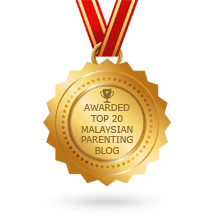“Although
commonly used, not everyone is aware of how paracetamol actually works.
Paracetamol blocks the production of prostaglandins, which are substances that
are released in response to injury or inflammation. Once ingested, paracetamol gets
absorbed into the bloodstream and blocks the production of prostaglandins, making
the body less aware of the pain or injury. Because of this, not only can it
effectively relieve pain and fever, but it also has few side effects when taken
at recommended doses.” said Dr Mary Cardosa, President of the Malaysian
Association for the Study of Pain.
Despite
being used by millions of people worldwide, misconceptions and myths disputing
the safety and efficacy of paracetamol have recently emerged online, distorting
the public’s perception of our trusted pain and fever reliever. Given the speed
at which information is posted, shared, hash-tagged and retweeted via social
media platforms, misinformation has the potential to spread and influence our
opinions and beliefs faster than ever.
One such myth is that paracetamol stays in your body for longer than 24
hours. In fact, a story recently spiralled through social media claiming that
paracetamol can stay in your body for up to five years following consumption,
prompting a surge of response from the online community to uncover the truth
behind these claims[iii]. In fact,
paracetamol is broken down extensively in the body, with a plasma half-life
(the time it takes for paracetamol to be reduced by one-half in the blood’s
plasma) of 1.5-2.5 hours[iv].
Whilst the rate at which paracetamol is broken down depends on age and dosage,
studies have shown that, when taken as directed, paracetamol is eliminated from
the body within 24 hours in healthy people[v],[vi].
FACT - paracetamol is one of the most widely used and researched medicines in the world[i]. Clinically shown to effectively treat both fever and mild to moderate pain, for many of us, paracetamol is a household essential and has been in our cupboards for more than 60 years[ii].
“Paracetamol
is an analgesic (more commonly known as ‘pain killers’) and can be used as a
‘first line’ medication for mild to moderate pain. With proper use, paracetamol
seldom causes adverse events, while reports of serious side effects are rare.
Unfortunately, articles and stories which dispute the safety of paracetamol are
becoming increasingly common. There is a growing concern amongst healthcare
professionals that this sort of misinformation could have a damaging effect on
the way in which members of the public perceive established medicines and
consequently, how they choose to manage their health. As such, it is crucial
that these myths are publicly identified and dispelled.” Dr Mary added.
Dr Mary is
one of several experts participating in the event entitled, ‘Busting the myths’, an educational
initiative by GlaxoSmithKline Consumer Healthcare Malaysia (GSK), which aims to
bring medical experts and members of the media to have an open discussion about
paracetamol, in order to separate fact from fiction.
“For almost
60 years, GSK has been committed to providing consumer products that help
people do more, feel better and live longer. As a leading consumer healthcare
company in Malaysia, it is our responsibility in addition to providing pain
relief solutions to ensure that our consumers are given the right information
about paracetamol ‒ information that is scientifically accurate and grounded in
facts ‒ to ensure that it is used appropriately and responsibly.” said Dr
Thravin Nathan, Area Medical Director – South East Asia, Japan & Korea, GSK
Consumer Healthcare.
“We are
delighted to be working alongside leading experts who are united in the goal to
educate and empower individuals in the way in which they manage their pain, and
to promote credible medical advice to members of the public. GSK supports the
efforts by groups such as MedTweetMY and Medical Mythbusters Malaysia
who have taken to the various social media platforms to educate Malaysians and
debunk medical-related myths.” adds Dr Thravin.
Dr Khairul Hafidz, Founder and Chairman
of MedTweetMY, an
online Twitter portal run by doctors, states that his motivation to establish
MedTweetMY was to provide Malaysians with a reliable source of medical
information that is easily accessible through social media. “More and more, we
find that individuals are turning to online sources to seek medical advice.”
said Dr Khairul. “We believe therefore that it is increasingly important to
provide Malaysians with a platform that contains not only scientifically
accurate medical information, but one which can also debunk medical myths which
circulate online.”
“We are
hopeful that our efforts will play an important role in helping Malaysians stay
informed and make the right decisions when it comes to medicine, as a lack of
understanding or inappropriate information could result in adverse effects to
their health. We also encourage Malaysians to fact check their source of
information before sharing it with others, as it could easily mislead others
into making the wrong decisions.” he added. Misleading can caused a very big impact to our society. Therefore, shared out the correct information and/or evidence that could beneficial to the community would be highly appreciated.
“Today’s
educational event is part of GSK’s broader commitment called ‘Health at Home’
which is intended to educate and empower people on how to use OTC (over the counter) medicines, like paracetamol, appropriately and responsibly, hence, we are proud
to partner with leading experts to help dispel these myths. In doing so, we
hope to uphold the longstanding and trusted perception of paracetamol, so that
we may provide Malaysians with the understanding and confidence to manage their
pain effectively and responsibly.” Dr
Thravin concluded. Mouse mommy was truely agree that the right medicine, correct dosage and follow the consume timing of medication can help in disease management. Never consume overdosage or underdosage of medication that might harm to our body.
[i] Prescott, L. (2001). Paracetamol (acetaminophen). 2nd ed.
London [u.a.]: Taylor & Francis, pp.1-3.
[ii]
Prescott L. (2000). Paracetamol: Past, Present, and Future. American Journal of Therapeutics.
7.2;143-148.
[iii]
Hoax or Fact. (2017). Panadol
or paracetamol remains in the body for 5 years, killing humans and vultures:
hoax. [Last accessed 22 May 2017]. Available from:
http://www.hoaxorfact.com/Health/panadol-or-paracetamol-remains-in-the-body-for-5-years-killing-humans-and-vultures-hoax.html
[iv]
Prescott, L.F. (1980). Br J Clin Pharmacol. 10(2): 291S–298S.
[v]
Martindale: (The Complete Drug Reference). Paracetamol Page 37. [Last accessed
10 March 2016]. Available from:
https://www.medicinescomplete.com/mc/martindale/2009/2679-p.htm.




























